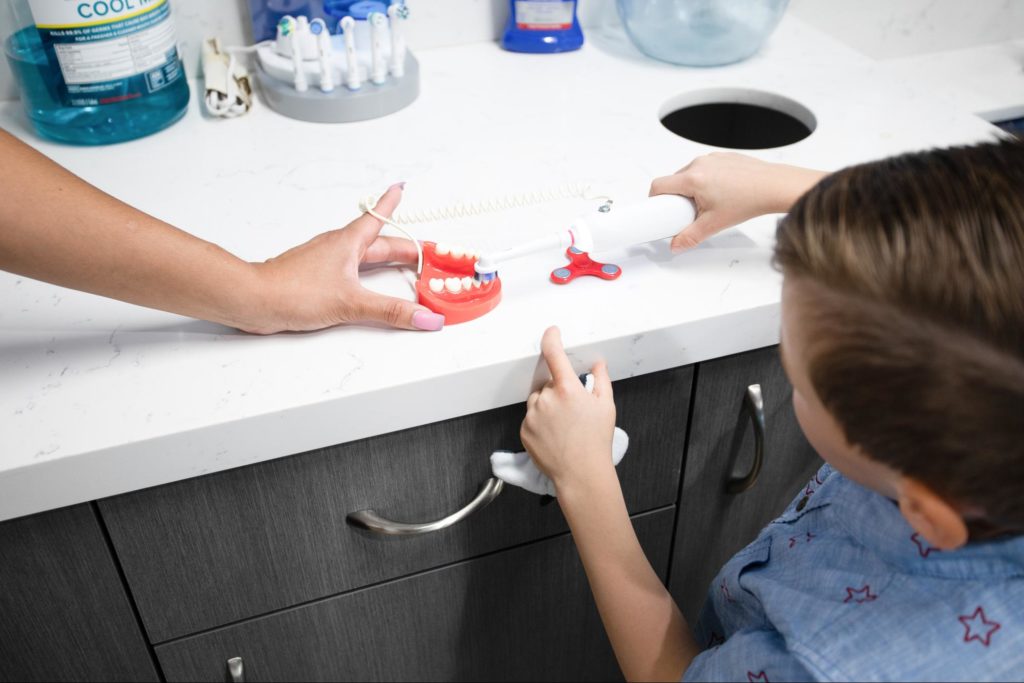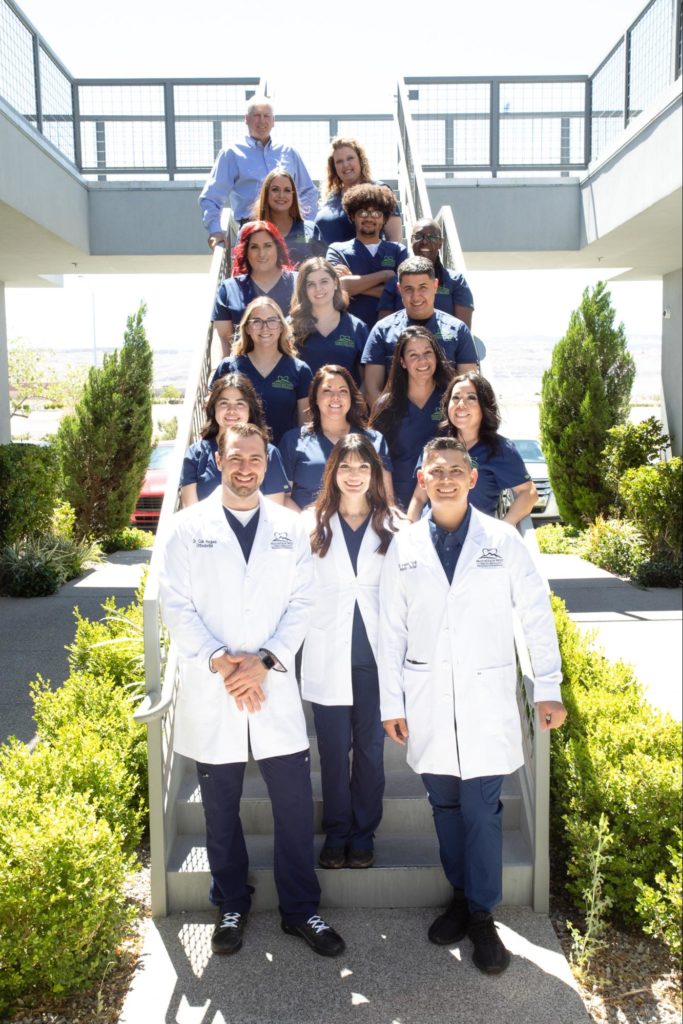We all know we’re supposed to brush our teeth. And hopefully, we all do that regularly. But proper dental care is especially important for people with braces. Braces straighten your teeth. Nevertheless, it’s incumbent upon the wearer to maintain a rigorous tooth cleaning routine. At Mountain West Dental Specialists in Las Vegas, we’ve compiled a list of great tips for brushing your teeth with braces.
Prepare Your Pearly Whites With a Pre-Rinse
When you have braces, be deliberate and meticulous about your oral care. Focus on what you’re doing – don’t just go through the motions. Before you dive right into brushing your teeth, start with a good pre-rinse. Think about how you use mouthwash. Swish the water around your mouth, moving it to different places. Remember, food can get stuck between your braces. A toothbrush might have a hard time reaching into those spaces. Prior to brushing, swish for roughly 30 seconds. This will help you dislodge any food particles stuck between your braces.
A Transcen-Dental Tool: The Toothbrush
Now that you’ve pre-rinsed, you’re ready to brush your teeth. Wet your toothbrush before applying any toothpaste. This will help soften the bristles so that they don’t abrade your enamel or gums. A high-quality toothbrush is a worthwhile investment in your dental hygiene. It’s the main weapon in your arsenal. So it’s important that you pick a good one. And don’t let prices make you compromise. You can afford a decent toothbrush without breaking the bank. You can choose either an electric or manual toothbrush. Speak to Dr. Keaton or Dr. Allison for specific recommendations.
Electric brushes are available in many different types with assorted features. Our team in Las Vegas can help you determine which brush would work best for your needs. Electric brushes typically come in either battery-operated or rechargeable options. A significant advantage of battery-operated toothbrushes is that they cost less than rechargeables. Ask one of the doctors for particular details.
Manual, soft toothbrushes are adept at cleaning spaces between brackets and wires. They’re the classic model of toothbrush. They are available just about everywhere and represent the most affordable choice.

Ride the Fluoride
Dr. Keaton or Dr. Allison might suggest a certain type of toothpaste for you. Which might prove helpful. if you’ve ever looked at the toothpaste aisle at your grocery or convenience store, there are a ton of options. Uncertain which one to choose? Feel free to ask us. That’s part of the reason we’re here after all. If you wear braces, it’s a good idea to stay away from a whitening toothpaste. Why? Well, it will whiten the exposed parts of your teeth. But what about the parts of your teeth covered up by your brackets? They won’t whiten! It’s kind of like getting a summer tan with a shirt on. Disregard the whitening toothpaste for now. Instead, opt for fluoride toothpaste. Fluoride prevents bacteria from accumulating on your teeth. Thus, it curbs cavities better than whitening toothpaste. Another helpful tool might be a fluoride gel or mouthwash.
Accessorize Your Angles
Remember to be mindful of your braces when brushing. Pay careful attention to the angle of your bristles. You’re brushing around your braces. So you’ll have to move your brush into positions that someone without braces might not. Keep your spirits up. You can do it! Listen closely to the advice that Dr. Keaton or Dr. Allison gives you. Don’t hesitate to ask for demonstrations. Furthermore, there are helpful videos on YouTube to show you how to adjust your angles to get the best results.
Who’s The Boss? The Floss!
Flossing is even more important when you have braces. Why? Because you have more obstacles to navigate around. At first, it might seem tricky. But stick with it. You’ll be amazed at how quickly you can become proficient at flossing with braces. Our teams recommend flossing at least once per day. Make a point to use waxed floss, as it doesn’t get stuck in your teeth as easily as the unwaxed version. See the main wire of your braces? Thread the floss beneath it. Then, run it between your teeth. Use care! You’re not sawing down a tree.
The Rinse Strikes Again!
Just when you thought you were done rinsing…think again! Rinsing is important both before and after the rest of your dental hygiene routine. Dr. Keaton and Dr. Allison suggest using an antibacterial mouthwash. Germs do not go quietly, so an antibacterial mouth rinse will help keep them at bay. It can also remove any stray food particles, and will make your breath smell better.
Be Sure. Be Doubly Sure.
Hang on a minute! Don’t be in too big of a hurry. Just because you did all the steps and checked all the boxes doesn’t mean you did a good job. So instead of heading straight to bed, take a few minutes to examine your smile in a mirror. Inspect your teeth for any scraps. This step can help you evaluate your performance. If you need to refine your cleaning steps, make adjustments as needed.

Show Up To Your Appointments
Finally, make a point to show up to your appointments. Keeping your regularly scheduled dental appointments is one of the best ways to keep your teeth healthy – with or without braces. Now that you’re ready, it’s time to get started.



